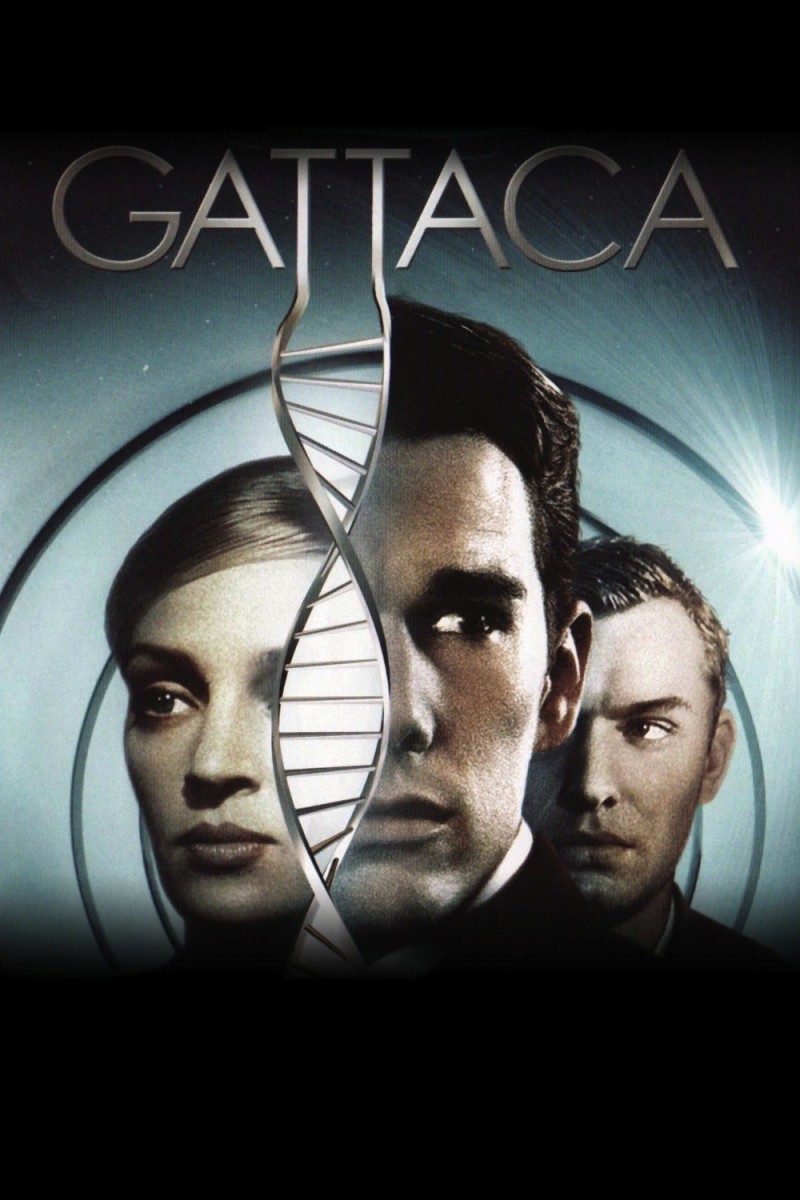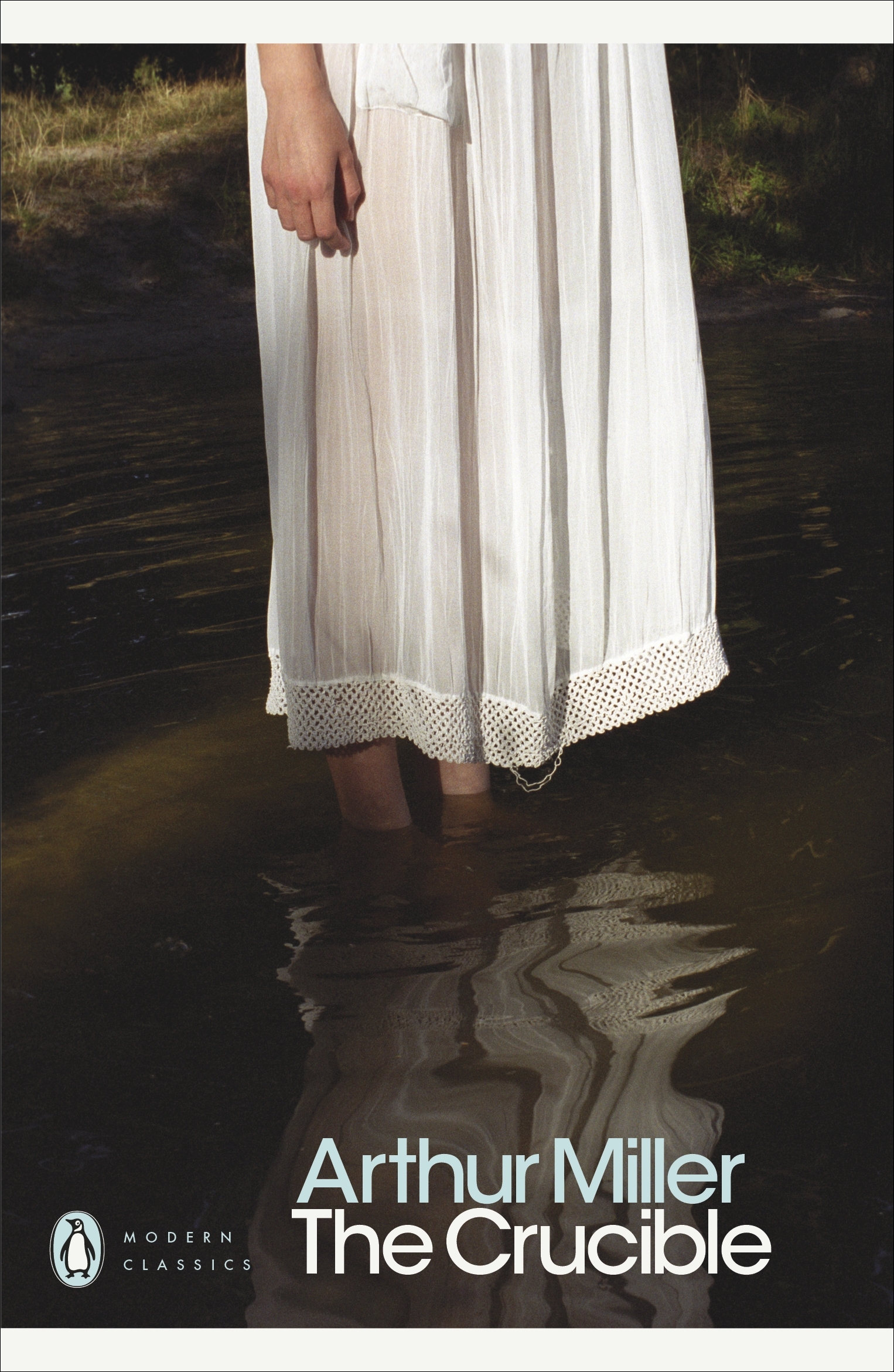

In AOS1 Unit 2 Reading and Comparing Texts for some students in Year 11 Mainstream English they will compare the film Gattaca directed by Andrew Niccol with the novel Nineteen Eighty Four by George Orwell. Other students may consider studying a comparison of Nineteen Eighty Four with Stasiland by Anna Funder.
In this brief analysis I will concentrate on comparing Gattaca with Nineteen Eighty Four using the 1997 DVD edition of the film directed by Andrew Niccol and the 2011 edition of the book published by Penguin Books.
Brief Framework to Compare Gattaca and Nineteen Eighty Four
Genre
Gattaca = Science fiction genre, thriller along with some film noir elements such as dark lighting, shadows & angled camera shots. The film has a dystopian view of genoism.
1984 = Dystopian literature & social criticism genre, a fiction novel based on a dystopian futuristic totalitarian state.
Setting/Time
Gattaca = The movie was released in 1997 and has a premise of being set in the not too distant future with film qualities of rockets launching and old black cars with a futuristic sound.
Costumes are neat, distinctively 1950’s, reflecting a uniform society that is bleak and sterile where perfection is desired and imperfection discriminated against.
The Gattaca Aerospace Corporation is where Vincent and Irene work.
1984 = Published in 1949 the novel’s setting is in 1984, 35 years into the future. Airstrip One, London, in Oceania is a futuristic totalitarian state described in a grim tone in chapter 1 scoured by a ‘vile wind’ (p.3) with run down apartments that lack functioning facilities.
Everywhere was a poster with an “enormous face” and the words “Big Brother is Watching You” (p.3).
Winston Smith works in the Records Department in the Ministry of Truth for the Party whose leader is Big Brother.
Writer’s Meaning
Gattaca = The opening quotations of the film set the scene for the debate of technological advancement versus natural order “Consider God’s handiwork, who can straighten what He hath made crooked” Ecclesiastes 7:13. Niccol presents the moral and ethical ramifications of genetic engineering in the film.
He exposes an authoritarian regime in power where society is divided into classes with the elite ‘Valids’ being genetically superior race who wield the power and the ‘In-valids’ are the bottom of society, powerless and unable to escape the status cast upon them.
Gattaca is a selfish, egotistical society where worth, relationships and status is decided by DNA and rights of individuals are meaningless concepts.
The most powerful meaning of Niccol is the story of one man’s courage to achieve his dream despite his imperfections.
1984 = In writing 1984 George Orwell’s main goal was to warn of the serious danger totalitarianism poses to society. He goes to great lengths to demonstrate the terrifying degree of power and control a totalitarian regime can acquire and maintain. In such regimes, notions of personal rights and freedoms and individual thought are pulverized under the all powerful hand of the government.
Witnessing such regimes in Russia and Spain and the rise of communism, Orwell believed in the potential for rebellion to advance society.
In creating the dysopian society of 1984 Orwell gave the world a glimpse of what embracing a totalitarian system like communism might lead to if allowed to proceed unchecked.
Structure
Gattaca = Gattaca is a film and as such is subjected to a ‘running sheet’ of the action which can be broken into 28 sections: (1) Opening titles, (2) The not too distant future, (3) Ten fingers, ten toes (4) The natural way, (5) The unspoken contest, (6) Discrimination down to a science, (7) The DNA broker, (8) Becoming Jerome, (9) The interview, (10) The Hoovers, (11) Cavendish club, (12) Invalid, (13) The eyelash, (14) Irene’s confession, (15) A close call, (16) Random checkpoint, (17) Blood from the vein, (18) The dance, (19) Who is Vincent?, (20) The morrow, (21) Irene’s warning, (22) The investigator’s visit, (23) An overlooked specimen, (24) the confrontation, (25) The other side, (26) Travelling too, (27) For future reference, (28) Going home.
1984 = The novel is divided into 3 parts and chapters. Part 1 introduces Winston Smith and describes the oppressive world that he inhabits.
Part 2 depicts Winton’s relationship with Julia and how they take more risks actively seeking to join the Brotherhood to bring down the Party. This section ends with them being arrested by the Thought Police.
Part 3 shows what happens to Winston as he is tortured by O’Brien inside Room 101 of the Ministry of Love.
The final section shows Winston submitting to the Party after his subsequent torture and thus removing any shred of resistance within him.
The final chapter demonstrates the triumph of the Party over Winston as he sits in the café and declares “He loved Big Brother” (p.342). Any hope of resistance against the regime is gone.
The Society
Gattaca = The future world of Gattaca, based on the science of genetic discrimination, offers a hostile world for those who believe in a natural birth classifying those individuals “Invalid” owing to the inferior nature of their random birth.
In this futuristic science fiction thriller, Andrew Niccol creates a science dictatorship, whereby human aspiration is repressed in favour of genetic perfection.
Society is strictly divided into the Valids and Invalids where there is an entrenched discrimination caused by genetic engineering.
1984 = The society of 1984 is highly controlled and segmented. The Inner Party along with the Thought Police maintain control over the Outer Party and Proles by a surveillance system (telescreen) monitoring all citizens at all times.
The Inner Party members have access to all luxury goods and can turn off their telescreens but the Outer Party members and Proles experience scarcity of commodities.
The society is also in a constant state of war with a changing enemy.
Point of View
Gattaca = Born an Invalid Vincent’s struggle, is to fly to Titan, Saturn’s moon as a First Class Navigator working for Gattaca Aerospace Corporation but he must change his identity and borrow the DNA of a Valid to achieve his dream. Vincent is a determined and courageous protagonist who refuses to accept his limitations.
Is there hope? Yes, there is hope that Vincent can overcome the system of control, oppression and discrimination. On his personal and dangerous journey he achieves his dream but also realizes the value of human fraility and imperfections.
Director Andrew Niccol celebrates the power of self-belief to inspire individuals to scale the heights of their dreams.
1984 = Winston hates the reduced circumstances of his life; he is afraid of the Party but takes the risky move of writing in his diary ‘Down with Big Brother’ which is the beginning of his struggle to rebel against the Party. He questions the existing social and political system and helps readers recognize the negative aspects of the dystopian world through his perspective.
Is there hope? No, there is no hope for Winston as the Party is in absolute control and remains so. His efforts are useless and ultimately he is tortured into submission. His dream that the Proles may provide some hope to overthrow the Party and therefore hope for humanity is eliminated in chapter 7.
The individual cannot overcome discrimination and oppression. Big Brother is all powerful.
Characters
Gattaca = Vincent Freeman = Protagonist, born genetically inferior as an Invalid with a heart defect, could not keep up with his Valid brother Anton, was set to die at 30. In order to achieve his dream of becoming a navigator at Gattaca he becomes a ‘borrowed ladder’ and uses a Valid man’s DNA to circumvent the genetic system.
Anton Freeman = born genetically perfect as a Valid he was always praised and admired by his parents and had all the privileges Vincent lacked. Security Chief at Gattaca in charge of the Mission Director’s murder. Cannot accept that Vincent could become part of Gattaca.
Jerome Eugene Morrow = born a Valid but tortured by his failure at coming ‘second’ he is confined to a wheelchair after failed suicide, gives his DNA and identity to Vincent, realizes his potential through Vincent.
Irene Cassini = born a Valid but does have a flaw in a weak heart, she is cool and aloof and in control of her emotions until she falls in love with Vincent who challenges her to accept his Invalid secret allowing him to complete his dream.
1984 = Winston Smith = Protagonist, late 30’s, an unhealthy man, a lowly placed worker in the Outer Party. Is afraid of the consequences of standing up to authority but rebels in a political act that results in his torture and destruction of any resistance to the Party.
Julia = younger than Winston, works in the Ministry of Truth in a mechanical job. She hates the Party and rebels against it as much as possible and is adept at subverting the restrictions of society. Becomes Winston’s lover but when tortured betrays him.
O’Brien = a member of the Inner Party, a powerful figure who tricks Winston into believing he is a member of the Brotherhood who are supposed to be dedicated to overthrowing the Party. However O’Brien reveals himself to be a loyal Party member when he has Winston and Julia arrested. He has them tortured breaking down any of their resistance against the Party.
Big Brother = is the public face of the Party that watches over the citizens of Oceania from posters and telescreens. Accompanying the posters is the slogan “Big Brother is Watching You”. He embodies the surveillance state that monitors every moment of society.
Mr Charrington = owner of the antique shop where Winston buys his diary, coral paperweight and later rents the upstairs room for the liaisons with Julia. He is actually a member of the Thought Police and was in disguise to inform on Winston.
Control in a Totalitarian State
Gattaca = Surveillance by genetic DNA testing of blood, saliva, urine and cells on all citizens.
Complete data base of DNA genetic blue print of all citizens kept by the Police. Police strike terror into people when they swoop on the Invalid quarters and in the restaurant when people flee in tear. People’s liberties are infringed at will with random testing of all people at any time of day or night in the community and in the workplace.
Job interviews are by blood or urine testing.
There is no line drawn against genetic engineering.
Gattaca presents a society where perfection is worshipped and anyone less than that is not acceptable and discriminated against. Society is divided into a class system of Valids who have opportunities and Invalids who are denied legitimate status as members of society.
Technology and science reign supreme, humanity takes second place and genoism becomes endemic.
1984 = Constant fear by surveillance, manipulation and control through use of telescreens, Thought Police, the slogan ‘Big Brother is Watching You’, informers/spies even children in families to betray signs of illegal thoughts against the Party.
Eradication of words and use of ‘Newspeak’ and ‘Doublethink’ along with propaganda to manipulate language and communication to control individual questioning and thought.
Constant changing of records makes memory impossible and truth is according to what the Party says. Along with fear of unending war with alleged enemies to create anxiety so no one will attempt to overthrow the system.
Control of emotions and love/loyalty is for Big Brother. During the ‘Two Minutes of Hate’ emotions of hate are then directed to the state designated enemy Goldstein.
Fear of interrogation and torture by the Party in Room 101 is disincentive for citizens to break the law.
Major Themes
Gattaca = Control, oppression & discrimination in a dystopian society, individual versus society, technology versus fate/natural order in search of perfection, courage & heroism determination, morality & ethics, science versus religion, human flaws/imperfections versus genetic engineering, facets of identity, the notion of an imposter and lack of individuality in a world of uniformity.
1984 = Control, oppression and discrimination in a dystopian society, language & communication, language as mind control, philosophical viewpoints, political power, dangers of totalitarianism, warfare, violence, torture, technology, psychological manipulation, physical control, repression, rebellion, control of memory and the past, control of information and history.
Online Tutoring of English using Zoom
 For Year 11 students studying AOS1 Unit 2 Reading and Comparing Texts look carefully at the context of the futuristic dystopian science thriller film Gattaca directed by Andrew Niccol and the dystopian totalitarian state novel Nineteen Eighty Four written by George Orwell.
For Year 11 students studying AOS1 Unit 2 Reading and Comparing Texts look carefully at the context of the futuristic dystopian science thriller film Gattaca directed by Andrew Niccol and the dystopian totalitarian state novel Nineteen Eighty Four written by George Orwell.
 For Year 11 students studying AOS1 Unit 2 Reading and Comparing Texts it is important to be very clear in your Introductions to make your Main Contentions and Message of Author/Message of Director answer the essay prompt.
For Year 11 students studying AOS1 Unit 2 Reading and Comparing Texts it is important to be very clear in your Introductions to make your Main Contentions and Message of Author/Message of Director answer the essay prompt. Please see 3 prompts comparing the film
Please see 3 prompts comparing the film 




 Why Annotate Your Texts in Studying English?
Why Annotate Your Texts in Studying English?